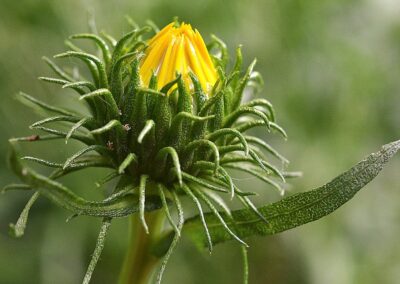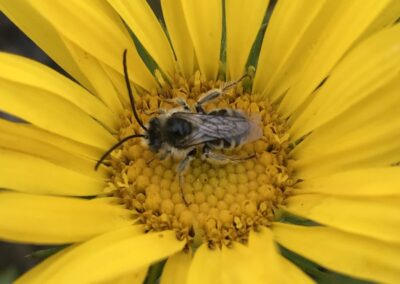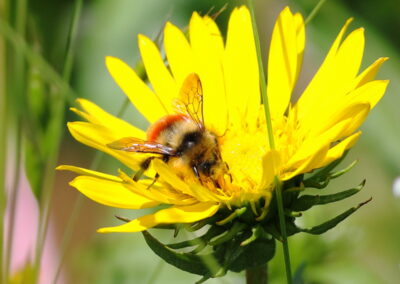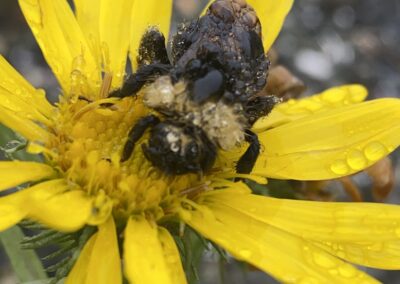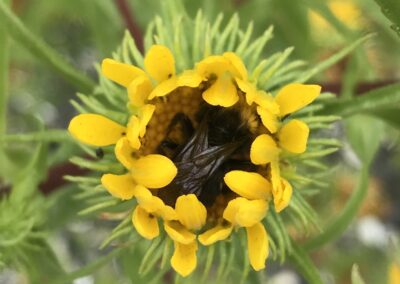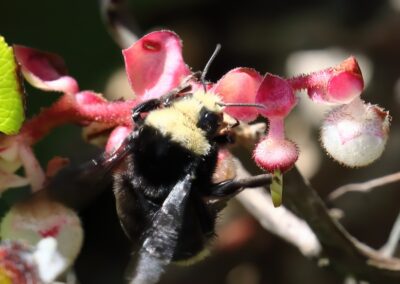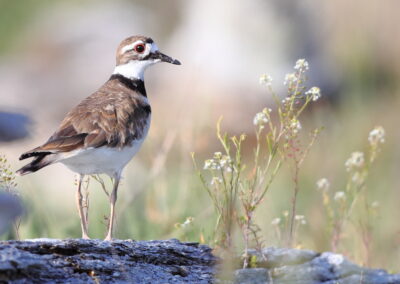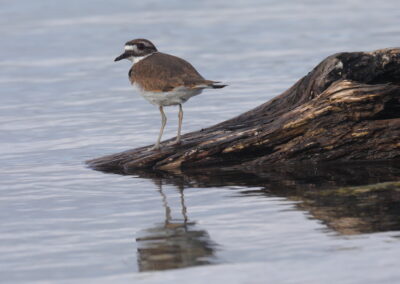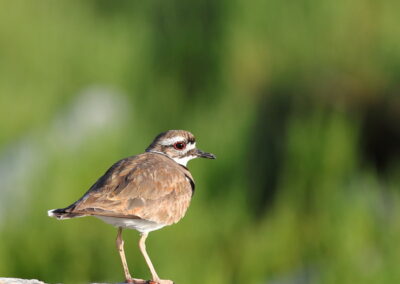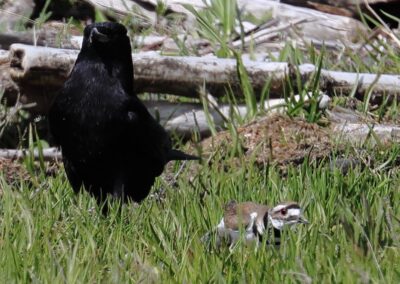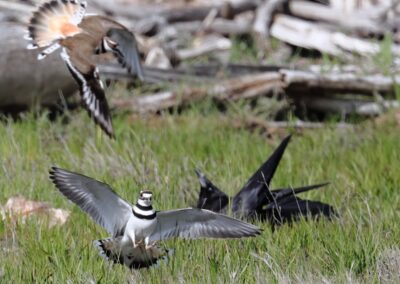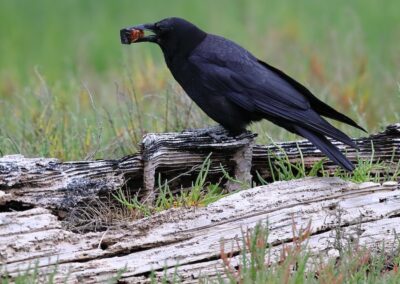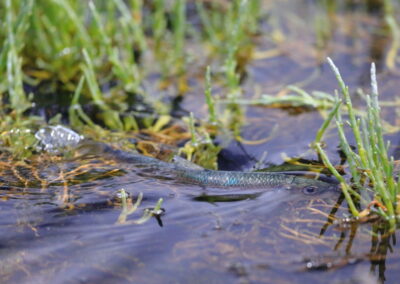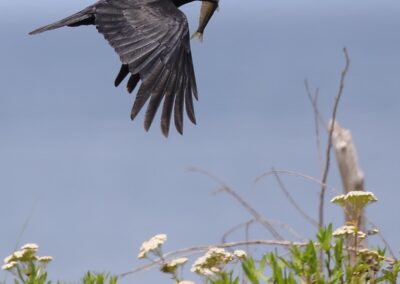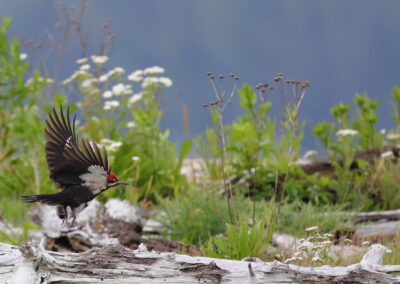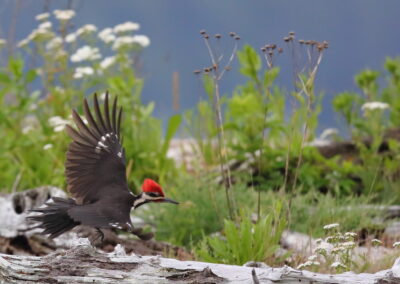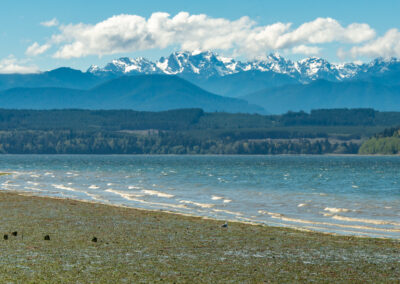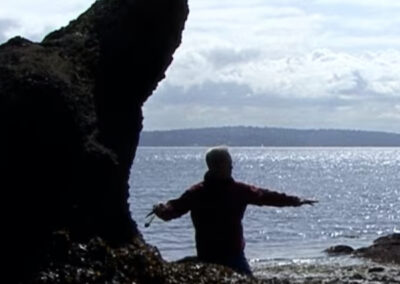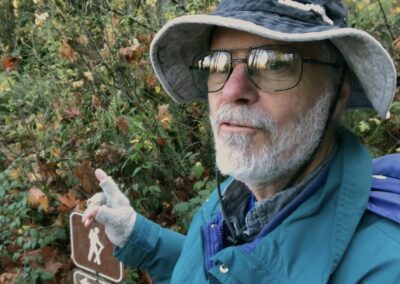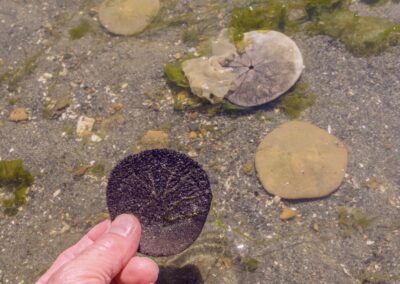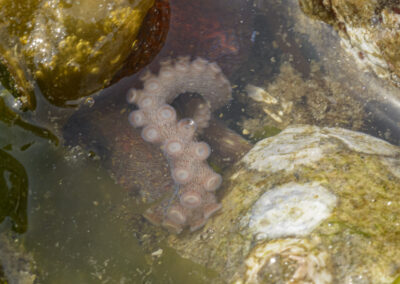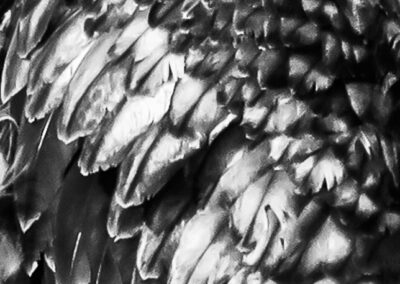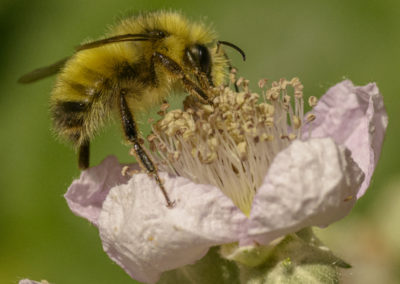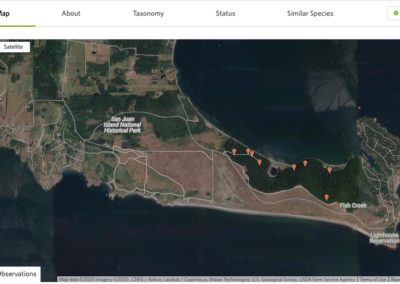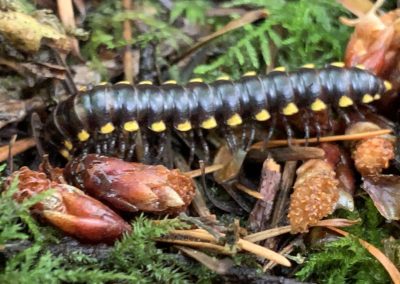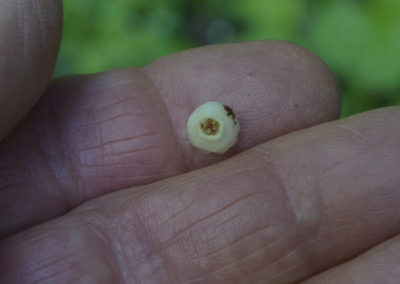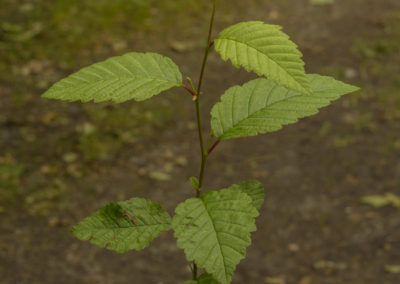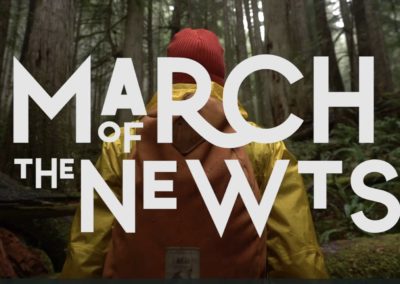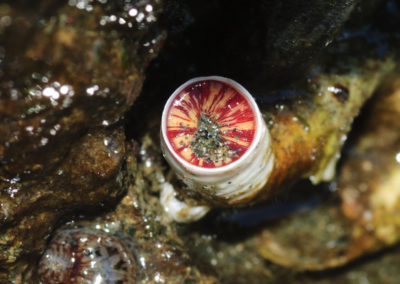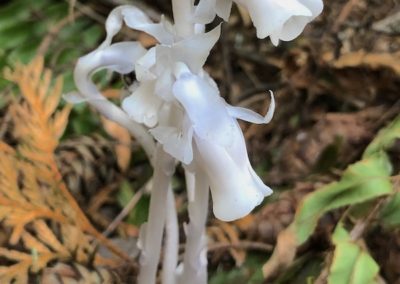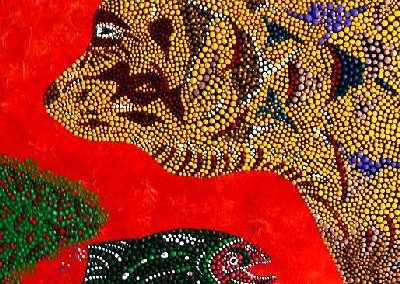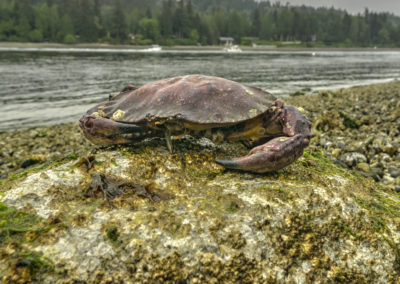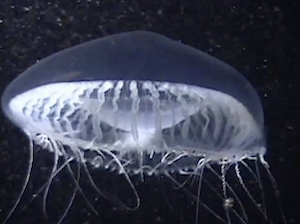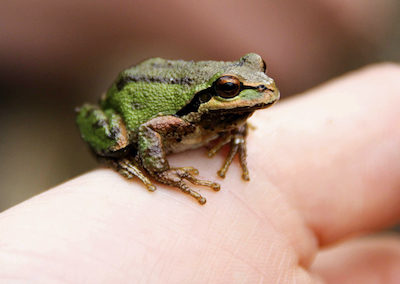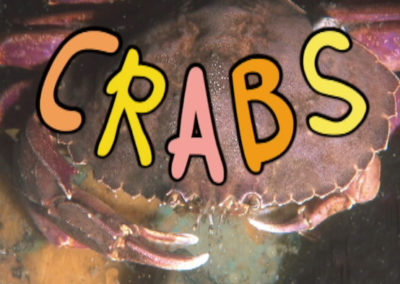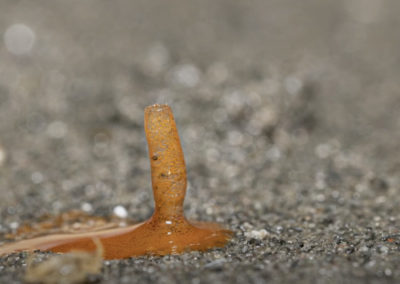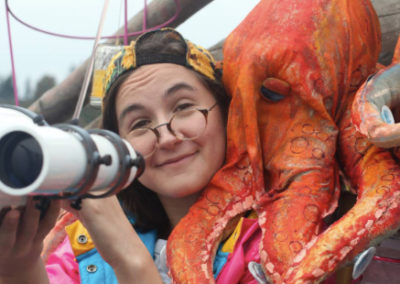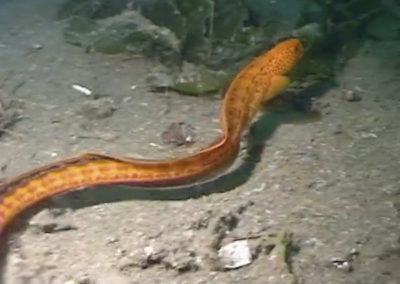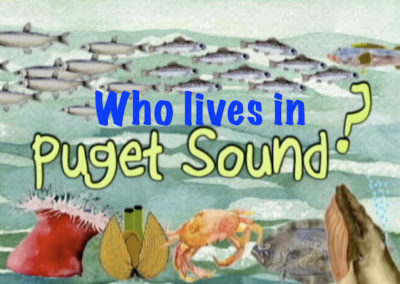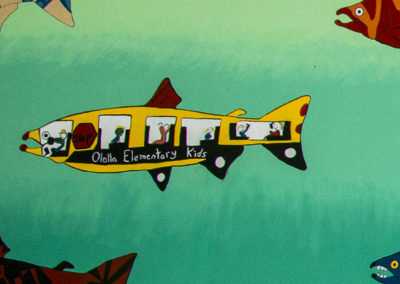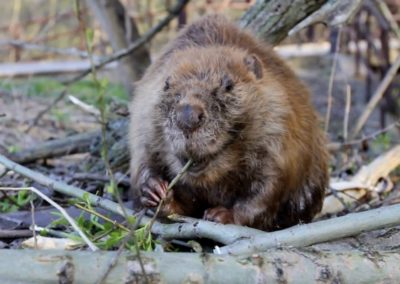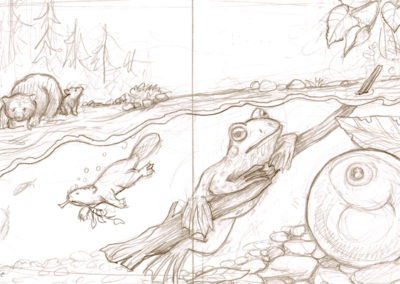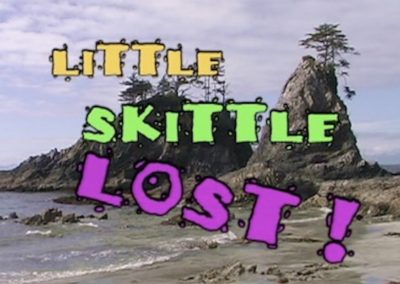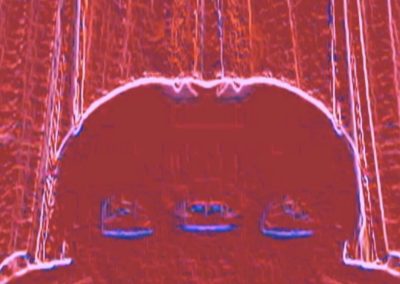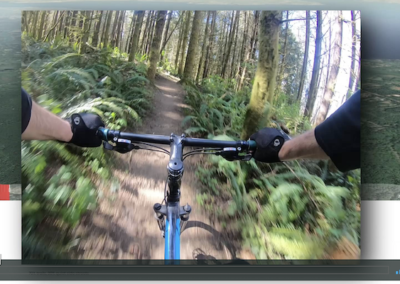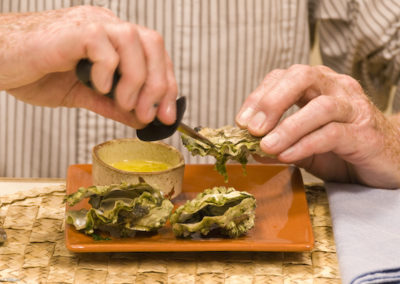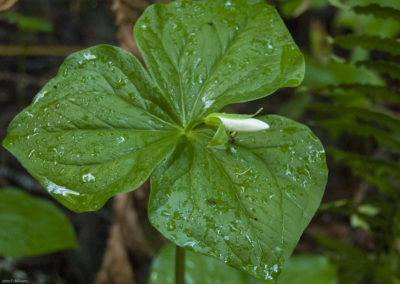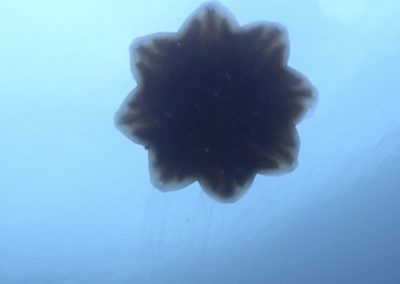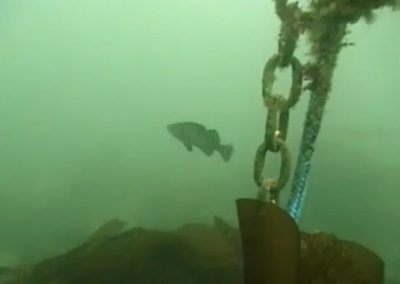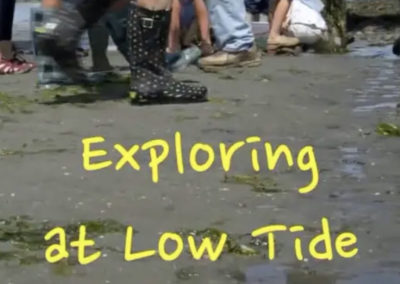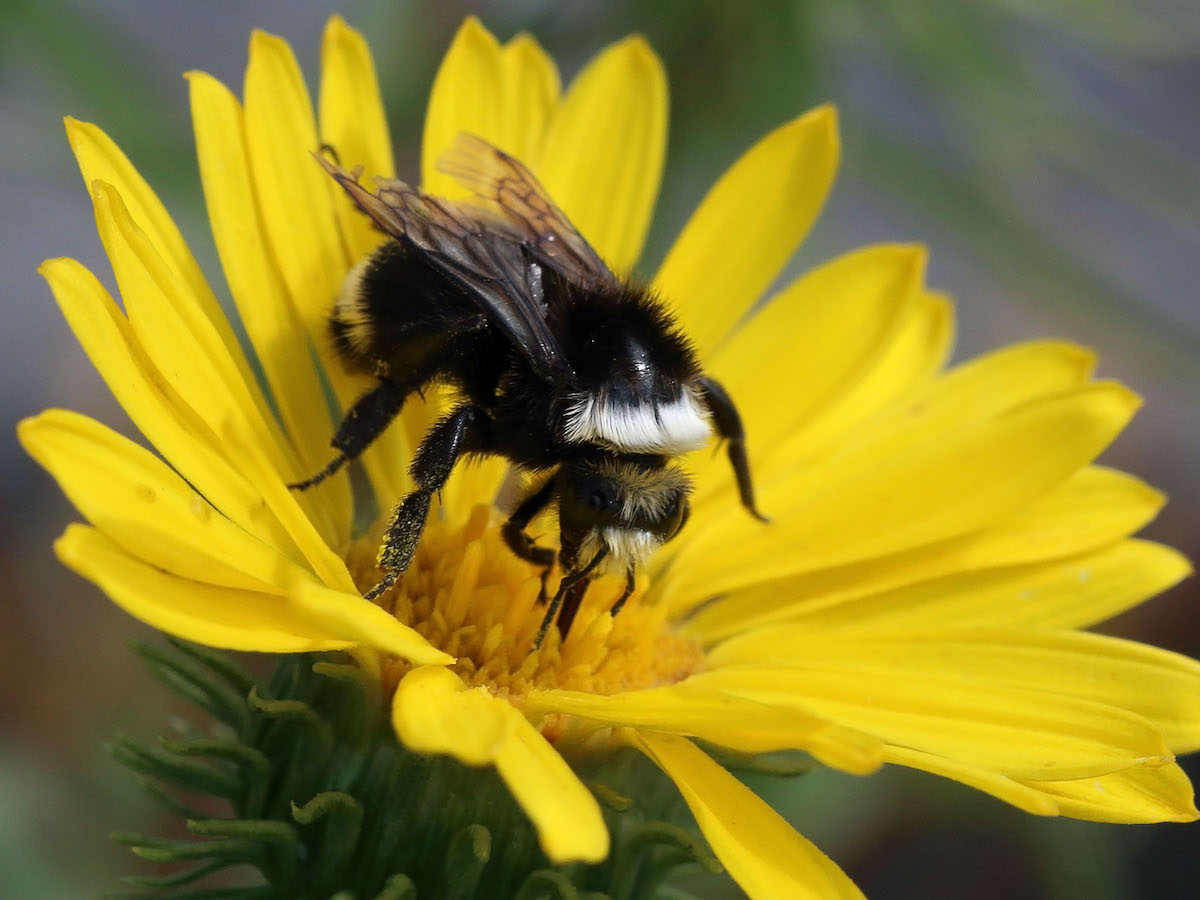
Salt Marshes
A Photo Essay
Photos by Michael F. Adams
The bright yellow flowers on the Puget Sound gumweed plants (Grindelia integrifolia) are there to do more than to just catch your eye. They are working hard at attracting pollinators so that they can make seeds and propagate.
Gumweed is only one example of salt-tolerant plants that thrive in this environment. Salicornia Pacifica, also known as Pickleweed or Glasswort is another keystone species as are Seaside plantain, Plantago maritima, and yarrow, Achillea millefolium. You can learn more in “The Ecology of Tidal Marshes of the Pacific Northwest Coast.”
Click on a photo below to see the gallery full size.
Of course, the pollinators are not the only critters flying and hopping around the salt marsh. And not moving much at all are drift logs and other organic debris which are critical to a healthy salt marsh as they provide structure for nesting as well as nutrients for challenged soils.
Killdeer, Charadrius vociferus is a very active bird in the upper intertidal range. If you’re patient and attentive, you may be rewarded to see these birds tending their nests. They are known to alert, feign a broken wing and lure the predator away from their nests; however, if you sit quietly, patiently, and watch, you’ll see some truly beautiful parenting. Please DO NOT approach their nests as they’ll abandon them if disturbed.
Click on a photo below to see the gallery full size.
You can find Killdeer near water, but also in dry areas.
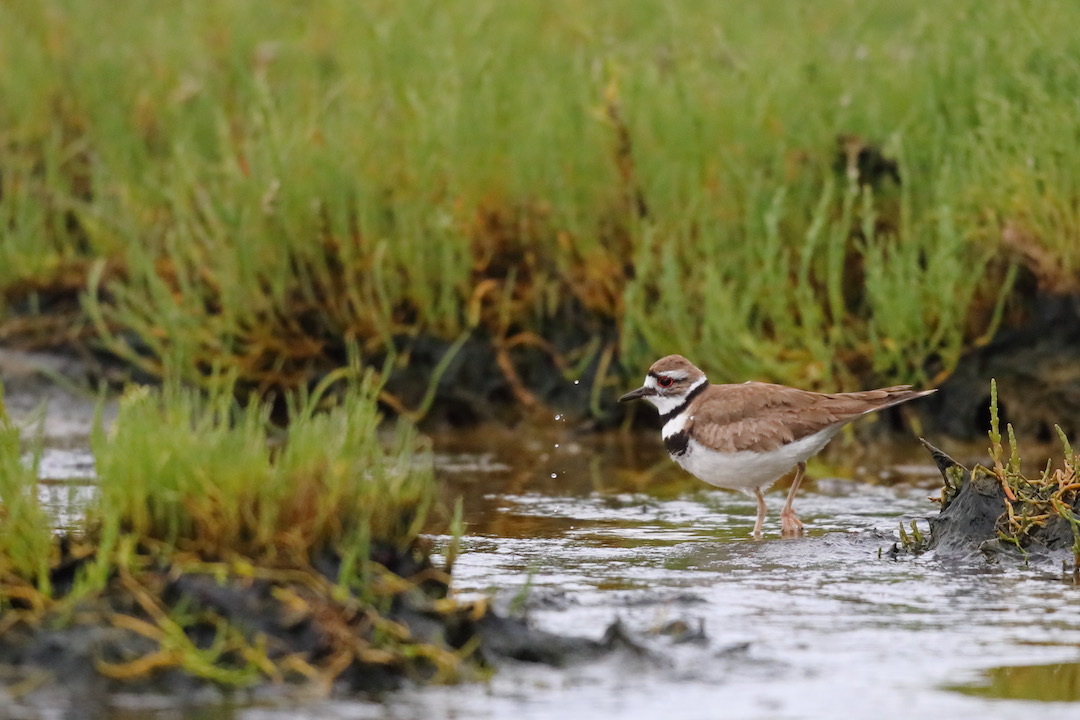
You can find Killdeer near water, but also in dry areas.
The crow is an interesting species that can make its livelihood from the marine intertidal environment. The Northwestern Crow has long been considered a close cousin of the more familiar and widespread American Crow, with a range limited to the Pacific Northwest. However, a recent study on the genetics of the two species prompted American Ornithological Society’s North American Classification Committee to conclude that the two species are actually one and the same.
Click on a photo below to see the gallery full size.
Pacific Herring, Clupea pallasii, that found its way into the marsh at high tide but unable to escape as the waters receded.
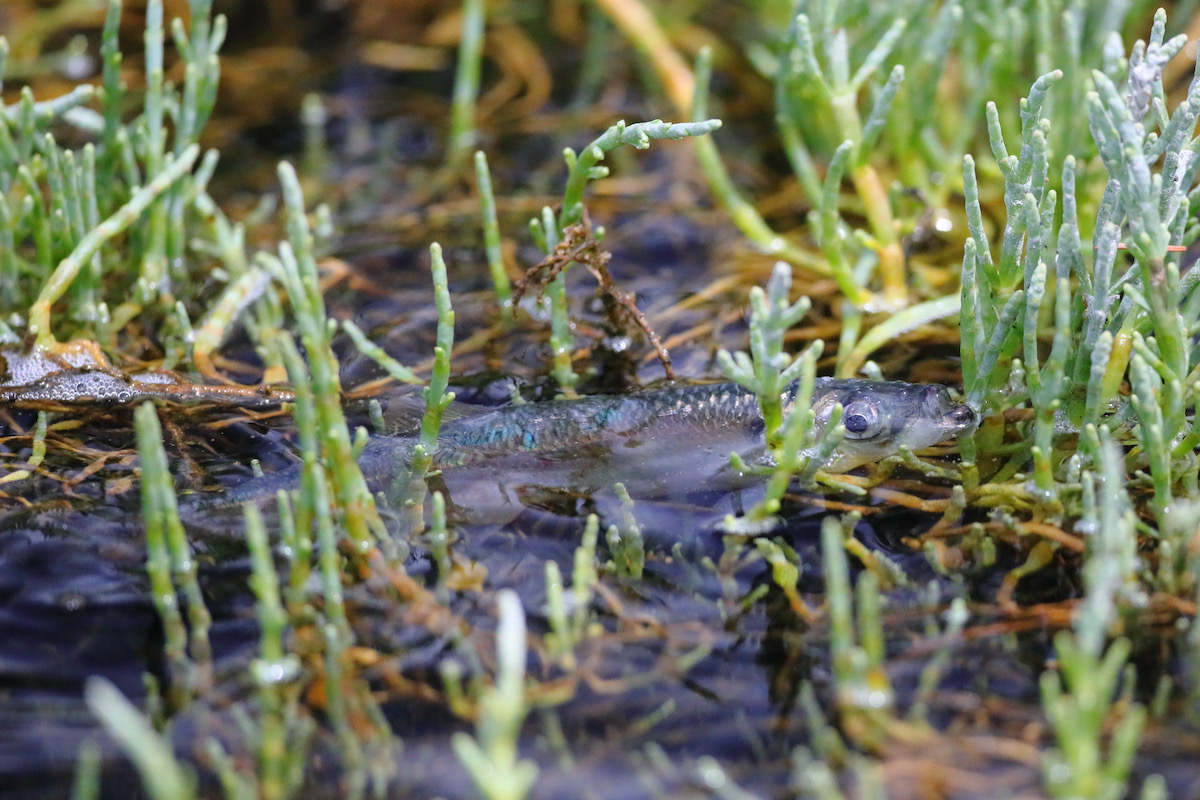
Pacific Herring, Clupea pallasii, that found its way into the marsh at high tide but unable to escape as the waters receded.
Pileated woodpecker, Dryocopus pileatus, typically a forest dweller, also makes its living visiting drift logs for the insects they harbor.
Click on a photo below to see the gallery full size.
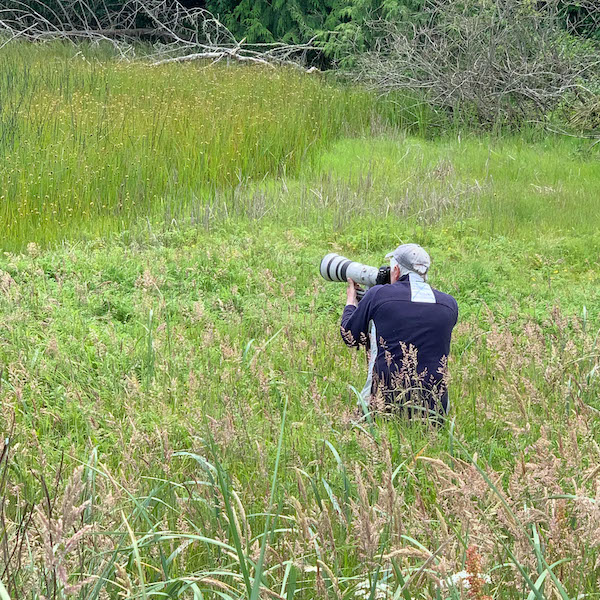
Michael F. Adams
Michael is fortunate to have lived his life near, in or on the waters of Puget Sound and Hood Canal where he finds the intertidal and nearshore environments irresistible. Trained as an engineer and educator, he’s taught science, served as a marine consultant and policy adviser to governments and is most proud of the family shellfish farm he built and operated with his wife Mary. When able, Michael takes great joy in observing and occasionally photographing local wildlife.
See More virtual tours
SOME OTHER ESPECIALLY INTERESTING RESOURCES
Science and Nature
This series of short videos, "Human Elements, Science and Nature," is on our local PBS station (KCTS9) as well as online. It features some great local science stories and amazing imagery.
https://www.kcts9.org/show/human-elements/episodes
Future Ecologies
I was thrilled when I discovered the “Future Ecologies” podcast because it has an uncanny resemblance to what we set out to do with Salish Magazine (except that it’s audio rather than visual).
It is one of the few media efforts which really embraces the ecosystem perspective. Use this link to take a look at the review of Future Ecologies on our SEA-Media web site.
The Marine Detective
Jackie Hildering invites you to her blog: "Join me in the cold, dark, life-sustaining NE Pacific Ocean to discover the great beauty, mystery and fragility hidden there." But even before you get to the blog, on her home page there is a slideshow of absolutely stunning photographs.
Street Smart Naturalist
Street Smart Naturalist: Explorations of the Urban Kind is a weekly blog written by David B. Williams to share observations about the human and natural world around Seattle, Puget Sound, and the Pacific Northwest.
Are you in the target audience?
- People who want to know more about Seattle and Puget Sound and the many fascinating stories that can be found by wandering the streets, deep diving newspaper archives, perusing old photos, and taking the time to slow down, be more observant, and ask questions;
- Urban naturalists who delight in noticing fossils in buildings, walruses in terra cotta, and ants bubbling out of sidewalk cracks;
- Flaneurs, historians, optimists, and the just plain nerdy;
- And, those who simply look around and find beauty and amazement in the world around them.
Encyclopedia of Puget Sound
The Encyclopedia of Puget Sound is a comprehensive guide to the science of Salish Sea ecosystem recovery. Articles on this site describe the region's major environmental threats and areas of concern, but also the facts and stories that make the Salish Sea an estuary of international importance. The website is a product of the University of Washington Puget Sound Institute and receives major support from the Environmental Protection Agency's National Estuary Program.
Hakai Magazine
Hakai Magazine explores science, society, and the environment from a coastal perspective. Not only is its content instructive, but it's presentation is visually inspiring.
Living on Earth
Public Radio's Environmental News Magazine. If you're looking for some substance beyond the normal focus of our media on sports, politics, fashion, and economy, listen to this show which does a great job of portraying earth ecosystems as something essential to our lives. The stories it tells are compelling.
IslandWood's Phenology Friday
For 12 weeks in 2020, one of IslandWood’s educators shared a phenological highlight. Watch the videos of their explorations.
Pacific Wonder Tracker
Pacific Wonder Tracker celebrates the delicious sense of wonder we experience when exposed to the natural environment. It is also specific to the natural wonders of the Pacific Northwest. Whether you live here, plan to visit, or just have a curious mental itch, you can enjoy reading about wonders you may encounter in coastal Washington and Oregon.
"Scientists on the Go" from WET Science Center
WET Science Center's "Scientists on the Go" activities integrate science into a child's day while incorporating reading, writing, and math skills! There are a combination of indoor and outdoor activities to keep the learner curious and asking questions. Check back regularly for updated science activities and new printable activity packets. Recommended for elementary age children.
Remote Science Learning
Use this guide to find science resources to supplement remote learning. Thurston County environmental organizations have developed activities for all ages. This resource is provided by the Thurston County ECO Network.
Deep Look
This collection of short videos by PBS shows the unseen at the very edge of our visible world. Get a new perspective on our place in the universe and meet extraordinary new friends. Explore big scientific mysteries by going incredibly small.
PLEASE HELP SUPPORT
SALISH MAGAZINE
DONATE
Salish Magazine contains no advertising and is free. Your donation is one big way you can help us inspire people with stories about things that they can see outdoors in our Salish Sea region.
We also don't advertise Salish Magazine, so please spread the word of this online resource to your friends and colleagues.
Thanks so much for your interest and your support.
We also don't advertise Salish Magazine, so please spread the word of this online resource to your friends and colleagues.
Thanks so much for your interest and your support.

